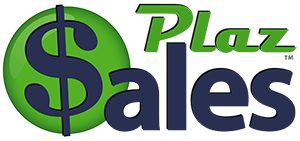There’s no question that setting up your own small business is a daunting procedure. There are many aspects to take care of. Luckily, we’re here to make stuff simple for you. First, we’ll give you a short point of sale description. You’ll then learn a guide to understanding what point of sale has to offer and how it can benefit your business.

So, if you want to understand what a POS system is? With a complete guide to POS system features, keep reading.
There’s no question that setting up your own small business is a daunting procedure. There are many aspects to take care of. Luckily, we’re here to make stuff simple for you. First, we’ll give you a short point of sale description. You’ll then learn a guide to understanding what point of sale has to offer and how it can benefit your business.
What is a POS System?
The first opinion to know the POS system meaning is that it includes point of sale hardware and point of sale system software. Jointly, these two things give traders all of the tools they require to accept famous payment methods and manage and comprehend their overall businesses. You employ your POS to evaluate and arrange your inventory, employees, consumers, and sales.
How Does A Pos System Work?
A point-of-sale system is a combination of hardware and software that work together to process sales and payment activities or point-of-purchase transactions. Point of sale software is installed on the point of sale hardware and works with a local server or Internet connection. In addition, a point of sale is an all-in-one system and can perform all other business-related activities, such as tracking inventory, helping you manage suppliers, labor costs, and employee management, and more. There are different types of point of sale according to different business needs, for example, there is point of sale systems for:
- Retail POS system
- Bar POS system
- POS system For salons
- POS system for restaurents
How To Use A Pos System?
There are several operations you can perform in the POS software. Here are some basic functions of the POS system and a guide on how to use them:
Inventory Management
You can keep track of items that are out of stock. You can also track items not only by total quantity in stock, but also by size, color, or other measurements.
Accept Payments
This is the part where you get paid. Virtually all point of sale systems can accept cash or credit cards, so the process of accepting these types of payment is fairly straightforward. All you need to do is scan the credit card with a card reader, add the bill to pay, and enter. You will receive the receipt once the transaction is complete.
Employee Management
Business owners can assign individual access, can track work hours, and monitor sales performance for each person.
How To Choose A Pos System?
Here are three things to keep in mind when choosing a point of sale system:
What Features Do You Need?
Point of sale systems can be used in many different businesses, such as retail stores, supermarkets, restaurants, lounges, bars, etc.
Do you need Cloud-Based Point Of Sale Systems?
A growing number of businesses are turning to cloud-based point of sale systems. Unlike conventional point of sale software, which was server-based.
Easy To Use Point Of Sale Systems
By choosing a point of sale that is very easy to use and offers plenty of training resources, you can streamline the training process and update your new staff in no time.
What are the Key Features to Look for in a POS System?
Let’s take a look at a few general features that apply to almost every type of industry.
- Inventory Management: POS systems can allow you to replace manual tallies with time-saving and accurate automated procedures.
- Employee Management: You can employ POS terminals for worker clock-in and clock-out, expecting that employees verify their identity, so you only settle for the time that employees are on the clock.
- POS Reporting: The real-time reports you can create from your POS system with only a few clicks can assist you to keep a close gaze on expenditures and identify the sources of shrinkage if it occurs.
- Third-party Integrations: Take time to learn if a POS system you’re supposing integrates with your accounting strategy, online ordering, customer affair management, business-relevant relevant applications. Integrated third-party applications say data is automatically dealt with between programs, so you won’t have to spend excess time keying in data — or amending data entry mistakes.

The Advantages of a POS System
Your business can acknowledge the following advantages by using a POS system:
Improved Accuracy
With a POS system, you can considerably lessen the chance of human error and offer far more accuracy than a primary cash register.
Simple Reporting
A POS system can facilitate reporting through reports which deliver valuable data in real-time. You can utilize this data to make conscious decisions that direct you toward success.
Speedy Service
A POS system can enable you to deliver clients by facilitating immediate transactions. It’s an incredible option to serve your clients manually.
Additional Payment Options
Modern brands are required to offer multiple payment choices at checkout. Your clients will appreciate employing their best payment alternatives like a credit or debit card, Apple Pay, Venmo, or Zelle.

Conclusion
Now that you learn everything, there is to realize what a POS system is. It’s not an opinion you should surge. If you’re selecting a POS system for the first time, bed in with making a list of features you must need and talk to fellow company owners managing in a similar space. Inquire what POS systems they’re utilizing and what they prefer or not prefer about them.

Recent Comments